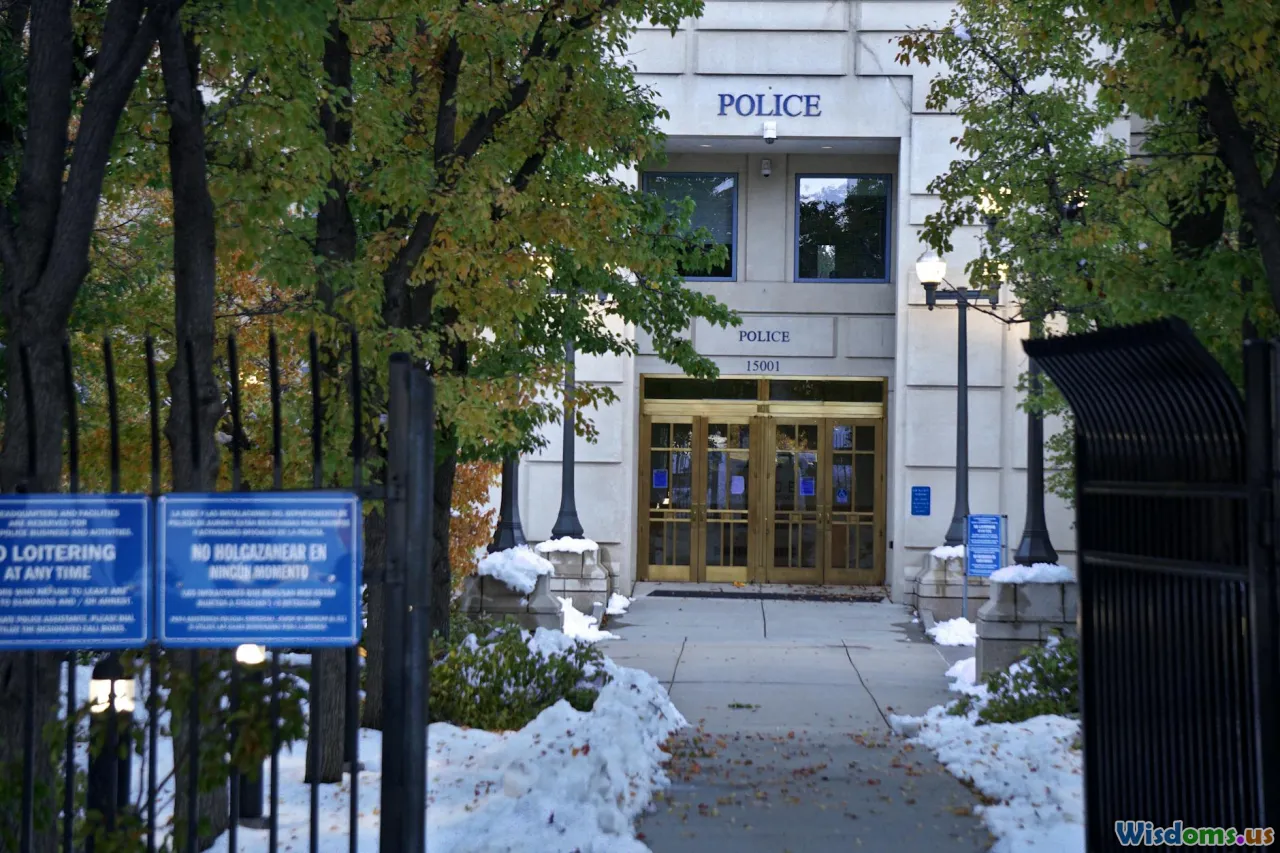
Media Hysteria Over Crime Does It Spread Fear
16 min read Explore how sensational crime reporting can heighten public fear and influence perceptions of safety in society. (0 Reviews)
Media Hysteria Over Crime: Does It Spread Fear?
It’s a familiar scene: breaking news banners flash across screens, footage rolls of distressed witnesses, and urgent headlines declare spiking crime rates. Stories about crime splash across front pages and dominate evening broadcasts, heightening the perception that danger is lurking everywhere. But how closely do these messages mirror reality—and what’s the true impact of this dramatic coverage? Is the so-called media hysteria over crime fanning the flames of public fear?
This article unpacks how reporting practices may amplify anxiety around crime, examines the societal and psychological effects, and offers practical insights into what citizens—and news organizations—can do to foster a better-informed public.
The Mechanics of Crime Reporting

The way journalists report crime stories crucially shapes public perception. Crime coverage is not new, but since the dawn of the 24-hour news cycle—and later, click-driven digital media—reporting styles have changed. Newsrooms face mounting pressure to grab attention, which often results in dramatic, sometimes sensational, headlines and stories.
Sensationalism and Selectivity
Sensational headlines, emotionally charged language, and real-time updates attract viewers and boost ratings. In 2023, a Nielsen study showed that major U.S. networks devoted almost three times as much airtime to crime stories, proportionally, as local police reports statistically justified. Rare, shocking incidents—for example, a single kidnapping or a high-profile homicide—receive outsized coverage, sometimes appearing again and again across different platforms.
This selective storytelling overlooks broader trends. According to the Bureau of Justice Statistics, violent crime in the U.S. dropped by 39% between 1994 and 2023. Yet high-profile incidents and ongoing coverage create the impression that crime is omnipresent.
The Role of Visuals and Language
Graphic visuals and urgent phrases—like “crime wave,” “mayhem,” or “city under siege”—anchor a story in the audience’s mind. Television and social media accentuate this effect: live scenes of police tape and flashing lights evoke stronger emotions than numbers or analysis. Infographics, maps, and security footage are interwoven with alarming statistics that often lack any comparison to historical context, distorting the perceived risk.
From Broadcast to Beliefs: How Coverage Shapes Fear

Exposure to repeated, dramatic crime coverage fundamentally affects the way people evaluate risk and safety.
The Availability Heuristic in Action
Psychologist Daniel Kahneman popularized the “availability heuristic”—a mental shortcut causing individuals to overestimate the likelihood of events that are vivid and recently reported. Crime stories, especially those involving unusual violence or affecting relatable victims, fit this pattern. The more often people see such stories, the more easily these events come to mind, skewing their sense of how common such dangers are.
A striking example comes from surveys conducted after the 2014 Ferguson unrest. Despite steady or declining crime in most communities, 63% of respondents overestimated local crime rates, correlating closely with their exposure to network and cable news.
The Cultivation Effect
Communications theorist George Gerbner described the “mean world syndrome.” Heavy, long-term exposure to television news with frequent crime stories causes viewers to see the world as more dangerous than it is.
Studies have consistently shown that heavy news watchers believe crime rates are rising even in years when statistical reality shows decline. For instance, a 2022 Gallup poll noted that 78% of Americans believed crime had increased from the prior year, despite the FBI reporting that violent crime had plateaued or dropped in most states.
Confirmation Bias and Social Amplification
As fear creeps in, people begin to unconsciously look for evidence that crime is everywhere. Social media algorithms magnify this effect by serving up more crime-related content to those who regularly engage with it, deepening anxiety and suspicion—and making the perceived danger feel ever more present.
Real-World Effects: Fear, Policy, and Behavior

Stoked by relentless reporting, public fear isn’t just psychological; it affects tangible behaviors and even government policy.
Practical Impact on Daily Life
Numerous studies have linked heightened crime fear to shifts in daily routines. Anxiety about break-ins, muggings, or assaults leads some to avoid certain neighborhoods, limit outdoor activities, or invest in costly security systems—even when statistical evidence puts local risk at “extremely low.”
In the U.K., for example, the “Crime Survey for England and Wales” found that every major spike in crime reporting (with or without real incident increases) saw double-digit jumps in sales of home alarms and private security cameras.
Effects on Policy and Justice
Public anxiety alters political landscapes. During periods of intense crime coverage, elected officials face mounting pressure to appear “tough on crime.” This urgency can sweep in hasty legislation or support for policies not grounded in statistical evidence—such as mandatory minimum sentences or zero-tolerance policing.
The early 1990s “Superpredator” panic, stoked by media reports and expert soundbites, led to laws in the U.S. that prioritized mass incarceration. Later evidence showed these policies often didn’t correlate with actual crime declines but did have serious, negative impacts on certain communities.
The Risk of Scapegoating and Stigmatization
Hyper-focus on crime—and particularly on certain neighborhoods or demographics—can fuel prejudice and stigmatize whole areas or groups. Communities shown in a negative light repeatedly may face economic fallout, property devaluation, or become targets for divisive politics. The New York Times investigated a Chicago neighborhood that appeared disproportionately in crime news, finding residents and businesses suffered disproportionately from outsiders’ perceptions, even as serious crime fell.
Digging Deeper: Why Does Media Hysteria Persist?

If misleading reporting is a problem, why does sensational crime coverage persist in the face of evidence? There are several intertwined reasons.
The Economics of Attention
Media organizations—especially broadcast news—are rewarded for attention-grabbing content. Sensational stories get more clicks, shares, and viewer hours, translating directly into advertising revenue and higher market share. In an era of shrinking newsroom budgets and fierce competition from online platforms, the incentives to engage readers are stronger than ever.
A 2021 Pew Research Center report found the five most-read online articles on a leading U.S. news website were all related to sensational crime or violence, even in a week dominated by other high-profile, non-crime news events.
The Psychological Pull of Threats
Humans are hardwired to pay attention to threats. This evolutionary legacy means that audiences are automatically drawn to information that seems important for survival. Editors know this, and the cycle persists: more crime news receives more engagement, and in turn, programmers double down on this content for future broadcasts.
Structural and Institutional Factors
Reporters often rely on outputs from police departments—press releases, live incident feeds—making crime a “ready-made” news stream. News cycles demand fresh, frequent stories, and crime is both regular and dramatic. In local news especially, high-impact events in otherwise low-crime areas (a rare violent assault in a suburb) can drive up engagement, creating a skewed sense of risk.
The Digital Age: The Role of Social Media and Citizen Journalism

The internet age has transformed not only what people read but how crime stories spread, hastening and broadening their impact.
Viral Stories and Echo Chambers
On social media, dramatic news travels fast. Videos and firsthand “citizen journalism” reports are shared widely, often without context or verification. A single incident can make a city—or even an entire country—seem under siege due to trending hashtags or viral threads.
A 2020 analysis by the Tow Center for Digital Journalism found that hyper-local crime stories could reach nationwide audiences within 24 hours on Facebook or TikTok. Sometimes, errors or exaggerations built into the original posts spread unchecked, outpacing corrections or clarifications.
Algorithmic Amplification
Algorithms prioritize content that prompts emotional reactions. Fear, outrage, and shock are among the strongest triggers. This means stories of violence, especially accompanied by intense visuals or unvetted rumors, repeatedly surface in people’s feeds. Even those who don’t regularly seek out news may end up exposed—sometimes repeatedly—to particularly disturbing stories.
Loss of Nuance and Context
Traditional reporting offered more space for nuance, follow-up, and correction. In digital media, context is easily lost. For example, a dangerous incident in one city may provoke fear across the nation, with little acknowledgment of distance, rarity, or extenuating circumstances.
Crowdsourced videos, incomplete police data, and fast-moving rumors can make responsible, balanced reporting difficult. The result: a news environment that too often magnifies risk and feeds perceptions of pervasive violence.
Dismantling the Cycle: What Can Be Done?

While media hysteria is a multi-layered problem, both news organizations and the public can adopt strategies to improve understanding and reduce unwarranted fear.
Advice for News Consumers
- Seek Context. Look for coverage that provides statistical context—how does a reported incident compare to longer-term trends, or to similar areas? Organizations like the Pew Research Center or government crime reports can provide baselines.
- Diversify Sources. Don’t rely on a single outlet, especially if headlines seem designed only to shock. Regional and even international outlets sometimes offer a valuable contrast.
- Beware of Viral Panic. Sensational stories on social media often lack context. Before sharing, check trusted sources or look for corrections.
- Question Your Own Feelings. Be aware that after repetitive, emotional stories, it’s normal to feel heightened anxiety. This doesn’t always reflect actual risk.
Best Practices for Responsible Reporting
- Highlight Trends, Not Just Incidents. Stories that contextualize events within larger trends help the public understand whether an event is truly unusual.
- Include Comparative Data. Illustrate whether this year’s incidents are higher or lower than past averages.
- Avoid Stigmatization. Be cautious about identifying communities or groups in ways that fuel prejudice.
- Report on Recovery and Resilience. Stories of communities pulling together or crime prevention efforts can offer hope and constructive guidance, balancing the narrative.
Encouraging Media Literacy
Media literacy education—whether in schools, community centers, or online campaigns—helps citizens learn to recognize sensationalism, fact-check reports, and approach crime news with a critical mind. Nonprofits and public broadcasters worldwide have created toolkits, podcasts, and workshops geared toward parsing crime reporting beyond the headlines.
Looking Forward: Toward Empowered, Informed Audiences

Crime is real, and reporting on it is both essential and expected in a functioning democracy. Yet, overblown coverage can distort perceptions, fuel suspicion, and even reshape society in undesirable ways. The challenge, then, is not to silence news but to strive for accuracy, context, and responsibility.
Informed citizens and mindful journalists have the power to break the cycle of hysteria. By questioning and contextualizing crime news, communities can foster resilience instead of fear. Ultimately, a clearer, more nuanced understanding of risk empowers everyone—not just to feel safe, but to build safer societies.
Rate the Post
User Reviews
Popular Posts














